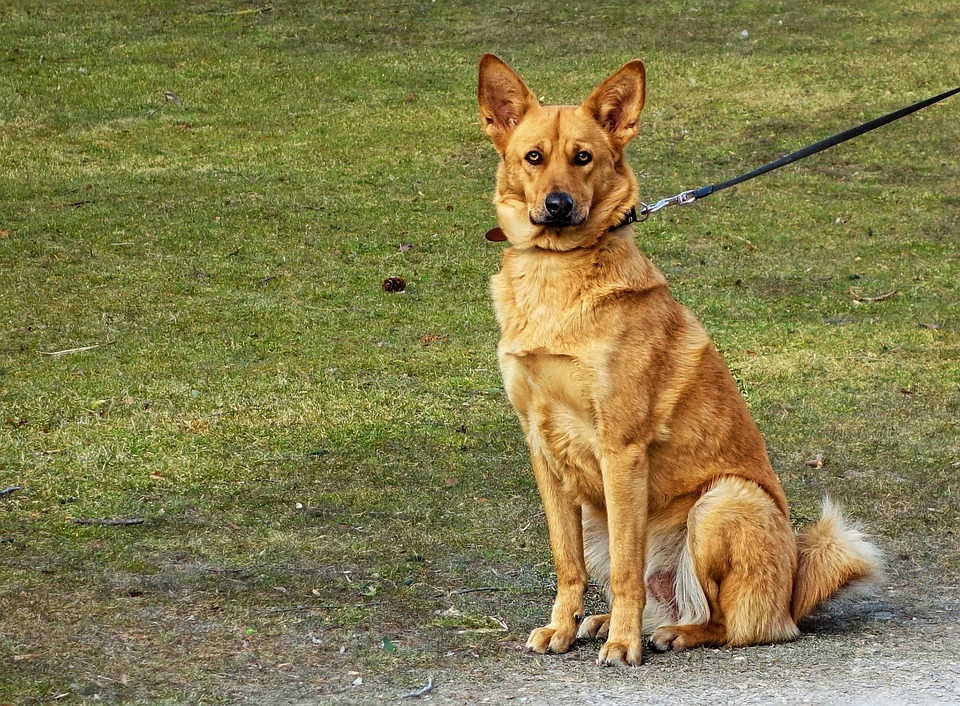What Your Dog’s Body Language Really Means: A Guide to Understanding Canine Signals 🐕
- Iqra Shaikh
- Jun 30
- 3 min read
Updated: 6 days ago
Your dog may not speak human, but they’re talking to you all the time — with their tail, ears, eyes, and body! Learning to “read” your dog helps build a stronger bond, prevents misunderstandings, and keeps them happy and safe.
Let’s decode what your furry friend is really saying 🐾👇
📌 What This Blog Contains
🐶 Tail Talk: It’s Not Always Happy

Wagging high & fast ➤ Excited or overstimulated (not always friendly!)

Wagging low & slow ➤ Friendly and relaxed

Tucked between legs ➤ Scared, nervous, or submissive

Still and stiff ➤ Alert or feeling threatened
Tail wags are not always a sign of joy. Look at the whole body!
👀 Eye Contact & Eye Shape
Soft, blinking eyes ➤ Content and calm

Wide eyes with visible whites (“whale eyes”) ➤ Nervous or fearful

Avoiding eye contact ➤ Submissive or unsure

Staring intensely ➤ Alert, possibly a warning

👂 Ear Signals: Mood Detectors
Relaxed, floppy ears ➤ Comfortable

Perked forward ➤ Curious or alert

Pinned back flat ➤ Anxious, scared, or guilty

One ear up, one down ➤ Unsure or listening closely

🐾 Full Body Language: Posture Speaks Volumes
Play bow (front down, butt up) ➤ “Let’s play!” 😄

Loose, wiggly body ➤ Happy and friendly

Stiff body with weight shifted forward ➤ Dominance or warning

Cowering, tail under, head low ➤ Fear or submission

🧠 Real-life example:
If you reach for your dog’s leash and they crouch with their ears pinned back and tail tucked, they’re not excited — they’re scared or stressed. It’s a clear signal they associate the leash with something unpleasant, like vet visits or loud places.
🐕 Common Calming Signals (AKA Doggy Stress Language)
Dogs try to calm themselves or others when anxious. Look for:
Licking lips
Yawning (outside sleepy time)
Turning head away
Sniffing the ground
Walking in slow motion
These signs show your dog is trying to diffuse stress or avoid conflict — not being stubborn or disobedient.
🐾 Final Thoughts
Your dog is always communicating — whether through a wag, a glance, or a subtle shift in posture. Once you start recognizing these cues, you’ll be amazed at how much you’ve been missing. Understanding your dog’s body language isn’t just about avoiding problems — it’s about creating a trust-based relationship where your dog feels seen, heard, and safe. 💛
🤯 Fun Fact!
Dogs can sense your mood through your body language and tone of voice — sometimes better than other humans can! That’s why they often come to cuddle when you’re sad or act silly when you’re laughing 🐾❤️
🐾 Pro Tip: Watch the Whole Dog
Don’t rely on one signal alone. A wagging tail doesn’t always mean a happy dog. Look at the tail + ears + eyes + posture to understand what’s really going on. Dogs communicate with their entire body — just like we do!
📝 In Summary
Understanding your dog’s body language helps you:✅ Know when they’re scared, excited, or in pain✅ Avoid unwanted behaviors or bites✅ Deepen your bond as a more responsive owner
They’re talking. You just need to learn how to listen 🐶💬
❓ FAQs for Understanding Dog Body Language
1. Why is it important to understand dog body language?
Understanding your dog’s signals helps prevent miscommunication, builds trust, and allows you to respond appropriately to their needs or stress.
2. What does it mean when a dog’s tail is wagging?
Tail wagging doesn’t always mean happiness. The speed, height, and direction of the wag can signal excitement, nervousness, or aggression.
3. How can I tell if my dog is anxious or scared?
Look for tucked tails, pinned-back ears, yawning, lip licking, trembling, or avoidance behaviors — all signs of anxiety or fear.
4. What does it mean if my dog shows the whites of their eyes (whale eye)?
This often indicates discomfort or warning. It’s a subtle sign that your dog may be feeling threatened or wants space.
5. Can understanding body language improve dog training?
Absolutely. Recognizing when your dog is relaxed, alert, or stressed helps you time cues correctly and avoid reinforcing fear or confusion.
👉 Read Next:
Also a cat parent?
Check out our ultimate cat care guide
Follow us on:



Comments